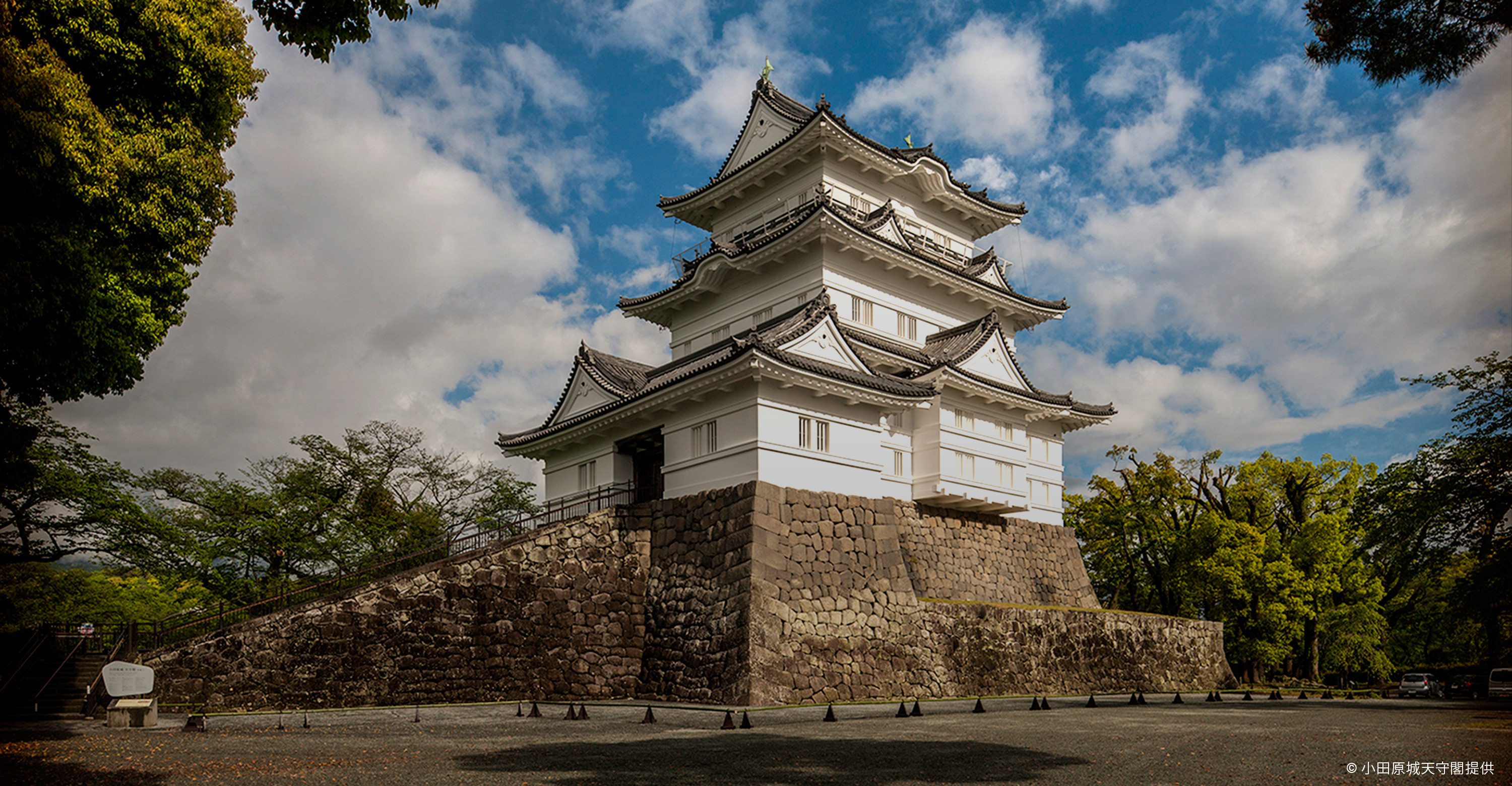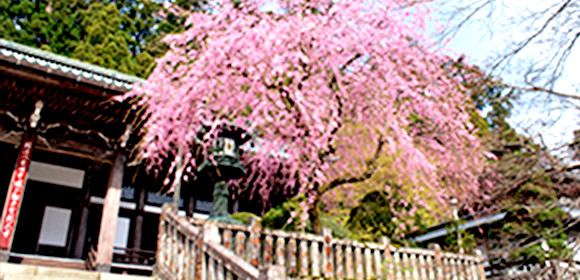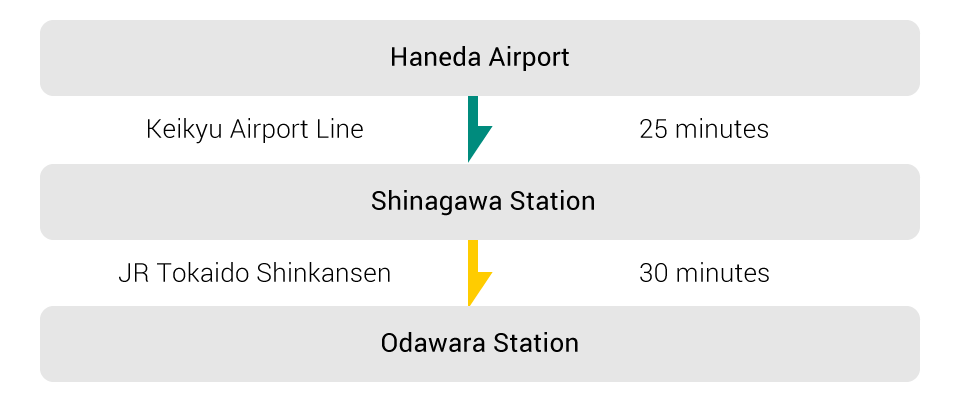Best Places in Odawara
As can be seen in the symbolic presence of Odawara-jo Castle, this town flourished as a castle town from the Warring States Era of the 15th century and later bustled as an inn town on the Tokaido Road during the Edo Era. Odawara is also well-known throughout Japan for its production of paper lanterns, which were the traditional lighting of Japan. The fisheries of Odawara have rich fishing grounds and catch half the fish species caught in Japan. Odawara is a town of history, tradition, and good food.
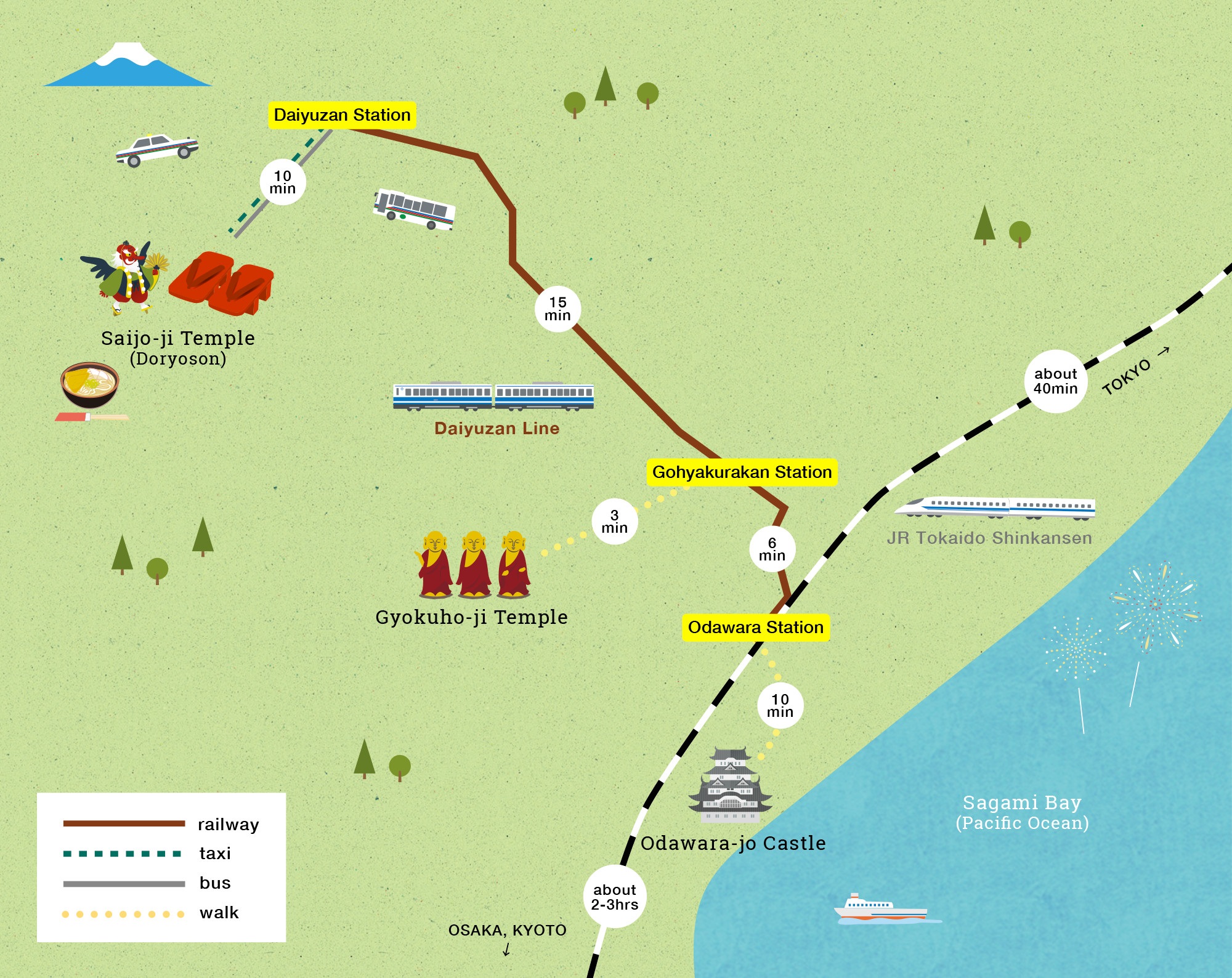
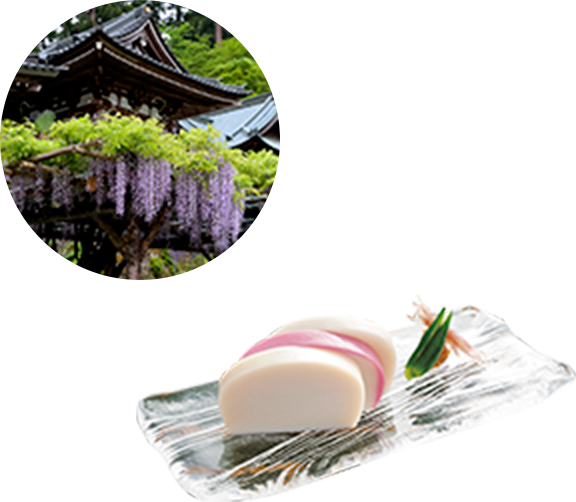
What’s Special About the
Odawara Area
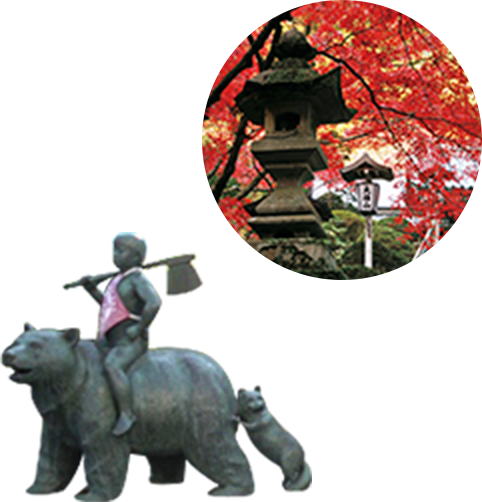
-


Odawara-jo Castle
-
Odawara-jo Castle was the home base of the Hojo Family, which dominated the Kanto Region during the Warring States Era. During the time of the third-generation leader, Hojo Ujiyasu, it was said to be impregnable and invincible and withstood the attacks of the powerful warlords Takeda Shingen and Uesugi Kenshin, but later was besieged by Toyotomi Hideyoshi for three months and surrendered without bloodshed, marking the end of the Warring States Era and the successful completion of Toyotomi’s effort to reunify all of Japan. The current castle tower was restored to its form from the Edo Era. From its top step, you can take in the marvelous view of the city and Sagami Bay.
-
-


Saijo-ji Temple
(Doryoson)-
Saijo-ji Temple (Doryoson) is a large temple with over 4,000 schools across the country and a history of 600 years and is known as hallowed ground in Kanto. Tengu, the long-nosed goblin, is one of the creatures of legend in the folk beliefs of Japan. Many large and small, high wooden clogs that are Tengu’s footwear are dedicated here. Also, the belief in marital harmony arose from the way that high wooden clogs play their roles together as a pair left and right. Thanks to the 400- to 500-year-old cyprus trees lining the avenue and the solemn mountain forest, the temple grounds overflow with spiritual energy (Reiki) and exude a mystical atmosphere. To digress, the Daiyuzan Railroad Line has been running since 1925 and was originally laid down for worshippers coming to Saijo-ji Temple.
From JR Odawara Station, 25 minutes on the Daiyuzan Line, then 10 minutes by bus.
-
-

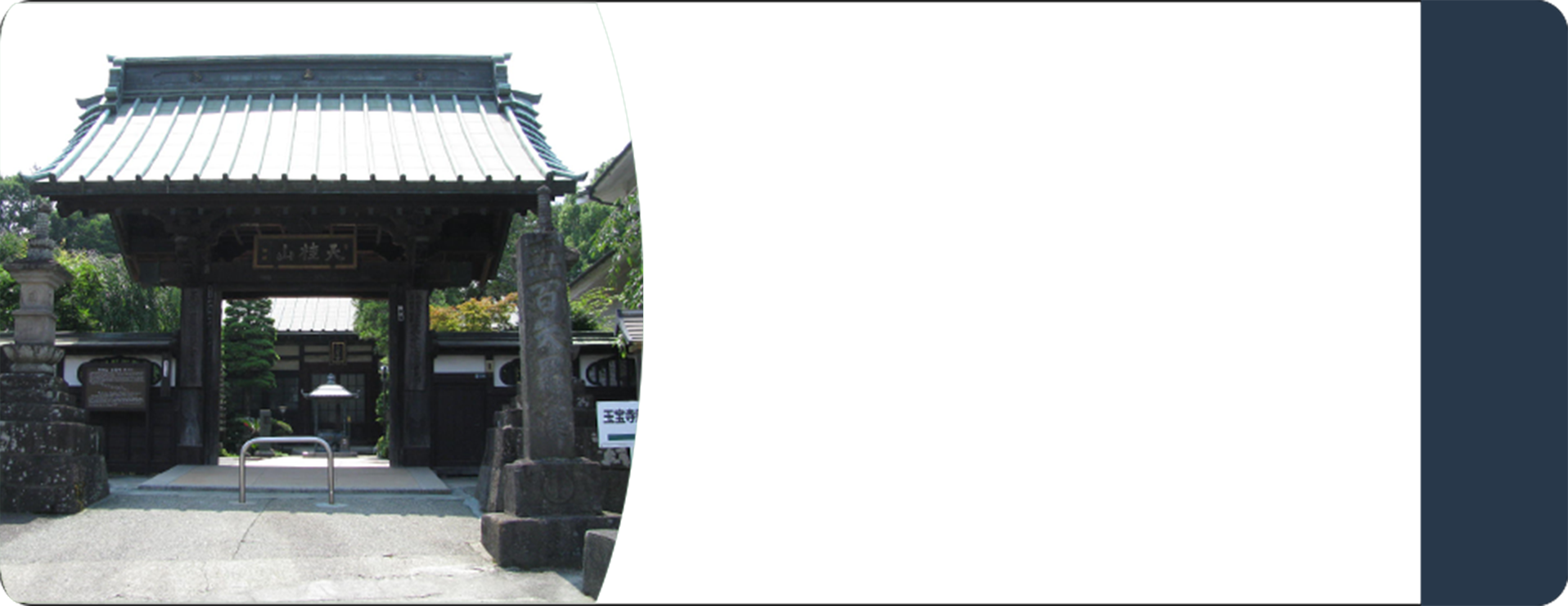
Gyokuho-ji
Temple
(Gohyakurakan)-
Gyokuho-ji Temple is commonly called “500 Arhats” because it enshrines 500 statues of arhats (sages). These arhat statues were completed over the course of decades more than 200 years ago. The 526 statues, which are 24 to 60 cm tall, are crammed together in parallel in the main hall and have a genuine grandeur and create a mystical atmosphere of quiet worship. Each of the individual arhat statues has a wealth of facial expression. It is said that everyone can find one of these statues that looks like themselves, so it is also fun to look for that one.
Access
From Daiyuzan Line Odawara station, 6 minutes to Gohyakurakan Station, then 3-minute walk
-
-


Specialty of the
Odawara area-
Kamaboko fish paste is a traditional fish dish that has been eaten since the Warring States Era. Nowadays, it is a famous dish representative of Odawara. It can be considered part of the food culture that Odawara enjoys thanks to its rich fishing grounds. Also, because Odawara is a town that has flourished since the old days, there are many shops serving food and drink in the area around Odawara Station. You can enjoy Japanese foods such as sushi and seafood dishes and many other genres of cuisine. There are many pubs and bars as well.
-
Model Course
Access to Odawara
▶From the JR Tokyo Station
▶From the JR Kyoto or Osaka Station
▶From Haneda Airport
*You can use the Japan Rail Pass only for JR trains.



